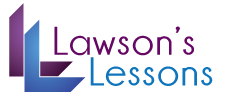Difficult Dialect
Topic: Dialect
Objectives: Students will learn to use various dialects.
Materials: A work sheet (attached at bottom). Access to the computer lab and headphones.
Steps:
- Introduce the topic of dialect to students. Explain dialects to them.
- Dialect – The term is applied most often to regional speech patterns, but a dialect may also be defined by other factors, such as social class. The other usage refers to a language socially subordinate to a regional or national other sense derived from it. A dialect is distinguished by its vocabulary, grammar, and pronunciation. Where a distinction can be made only in terms of pronunciation, the term accent is appropriate, not dialect.
- Ask the students if they have any examples of dialects. Be sure that they are actually dialects, not accents.
- Explain to students how they can use dialects to enhance their speech, but warn them that dialects should only be used selectively. If you can not pull it off, do not do it!
- Hand out the handouts. Tell students to use these sights to complete the assignment. Students will have twenty minutes to research and complete their handouts.
- Have the class (in the computer lab, unless 1 to 1 school) take a look at the following addresses.
- http://www.evolpub.com/Americandialects/AmDialLnx.html
- http://web.ku.edu/~idea/
- Wander around the room as the students research dialects. Encourage to take this research time seriously as they will be expected to “test out” a dialect of their choice.
- Once the research period is complete, ask for volunteers to try saying a passage in the target dialect.
- Students will say the following line in their chosen dialect.
i. “Mr. Smith ate all of the apples and didn’t share any with the children.”
- Remind the students that this exercise is just for fun and try to get as many volunteers as possible.
Name: ___________________________________
This sheet has some examples of dialects found in literature. Look through the examples and use the webpage http://www.evolpub.com/Americandialects/AmDialLnx.html to classify these examples.
“I doan’ hanker for no mo’ un um, Huck. Dese is all I kin stan’.” – Jim from Mark Twain’s Adventures of Huckleberry Finn
This quotation is an example of what dialect? _____________________________
“Mister Jem, we’re mighty glad to have you all here. Don’t pay no ‘tention to Lula, she’s contentious because Reverend Sykes threatened to church her.” – Zeebo from Harper Lee’s To Kill a Mockingbird
This quotation is an example of what dialect? _____________________________
“I still say that Jean Louise will not invite Walter Cunningham to this house. If he were her double first cousin once removed he would still not be received in this house unless he comes to see Atticus on business.” – Aunt Alexandra from Harper Lee’s To Kill a Mockingbird
This quotation is an example of what dialect? _____________________________
“He fair likes he langs tuh set his brazened face agean ‘em! And yon bonny lad Heathcliff, yah mind, he’s a rare un! He can girn a laugh, as weel’s onybody at a raight divil’s jest. Does he niver say nowt of his fine living amang us, when he goads tuh t’ Grange?” Joseph from Emily Bronte’s Wuthering Heights
This quotation is an example of what dialect? _____________________________
——————————————————————————————————————————-
Find one example of two different dialects that are not addresses on this worksheet and write them below.
What dialect is this? _________________________________________________________________
What dialect is this? _________________________________________________________________
Andee Collinson
9/2/09
